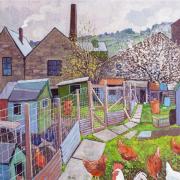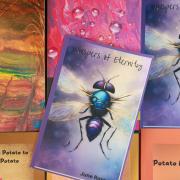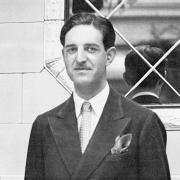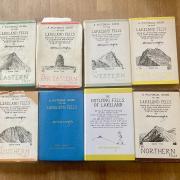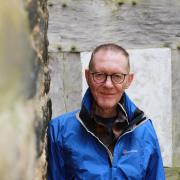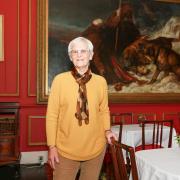The real home of Beatrix Potter has been out of bounds for years – until now. Mike Glover reports
The iconic image of Beatrix Potter, with her Herdwick wool overcoat and squashed Fedora, is an enduring one. It portrayed well the country woman farmer she was for the second half of her life, living with her solicitor husband in the wilds on the Lancashire side of Windermere.
But this image was one carefully cultivated by the clever entrepreneur who had, after all, seen the merchandising opportunities of her most famous creation, Peter Rabbit, decades before anyone else.
In reality, even though the author, artist, farmer and conservationist embraced and championed the country life, she never lost the tastes of the big city.
Just how much the London influence stayed with her is only now being revealed to her admirers, with the opening up of her real Lake District home, Castle Cottage, to viewing.
Mandy Marshall, a former retail and property businesswoman from Didsbury, took over the tenancy of Castle Cottage a little more than a year ago with her husband, Bill. It was relief to the locals who had campaigned against it becoming yet another holiday home.
It had already been renovated by owners, the National Trust, and the Marshalls have been clearing out the clutter, tidying the garden and getting it ready to be seen by guided parties by arrangement.
Although Hill Top in Near Sawrey is the Mecca for all lovers of Beatrix Potter’s works and life, it was only ever a retreat and meeting place for her business deals. When she married William Heelis and moved to the Lake District permanently in 1913, the couple’s matrimonial home was here at Castle Cottage, a farm over the road from Hill Top.
As she settled in and developed the cottage and surrounding barns and land, she introduced many features more typical of London town houses.
‘Although you could take the woman out of London, you could never take London out of the woman,’ is how Mandy describes the way Beatrix developed the cottage.
Among the features are an extension comprising two large rooms, one downstairs with French windows out on to the garden, and one upstairs with a period fireplace, both with South-facing views of the surrounding Fells through ample poster windows.
Outside is a south-facing veranda on which Beatrix would sit and contemplate the end of the day. There is a hidden wrought iron garden staircase from the upstairs, giving a quick escape to the rear of the estate and Moss Eccles Tarn, which the couple owned.
When she left Castle Cottage to the National Trust, along with 14 other farms and 4,000 acres, she stipulated that they could not open the home as an attraction.
But as a qualified Blue Badge Guide, Mrs Marshall can give tours of the estate, including the house, and surrounding areas. The National Trust has helped with the period appeal by donating authentic furniture left to them by the Potter-Heelises, like his favourite desk.
Mandy has also been appointed sales manager for the Beatrix Potter Society, with stocks of their pamphlets, cards and books being moved from their headquarters in Surrey to Castle Cottage. And in another development resonating with her distinguished forbearer, Mrs Marshall has also taken up championing the Herdwick sheep beloved by Beatrix.
The author was the first president of the Herdwick Sheep Breeders’ Association and stipulated in the terms of her bequest how many Herdwicks had to make up each flock at each farm.
Mrs Marshall has set up a company, called simply Herdwick, with shepherdess Alison O’Neill, who featured in September’s Lancashire Life.
Its logo will be based on an original Smit mark used by local shepherd Tom Storey to brand Beatrix’s sheep. The company will make and sell Herdwick tweed handbags and accessories, manufactured by John Chapman bags of Carlisle, to the designs of the two women.
The pair has already hosted visits by the Beatrix Potter Society and a couple of other groups. ‘I have already had a couple of people in tears sitting on the veranda. It is unbelievable how honoured they felt, because up until now all this has been inaccessible,’ said Mandy. ‘In fact, most of the guide books say no one can come in to Castle Cottage.’ She also plans to start guided tours based on other literary greats, such as Wordsworth and Ruskin.
This takes us back to Castle Cottage’s literary connection. The only book Beatrix Potter wrote there was Johnny Townmouse, about a town mouse meeting a country mouse and their dilemma over where to live.
On the back is inscribed: ‘One place suits one person; another place suits another person. For my part, I prefer to live in the country, like Timmy Willie.’
Perhaps a reference to her own internal debate. She may have been happy living as a country mouse, but the way she developed Castle Cottage shows she hadn’t lost all her town mouse ways.
Visit the house
Beatrix Potter Heelis, died on December 22, 1943. She bequeathed 15 farms and over 4,000 acres to the National Trust including Yew Tree Farm, pictured on this page, a working farm and bed and breakfast. Now, you can visit Castle Cottage by special arrangement by ringing 07808934175.



